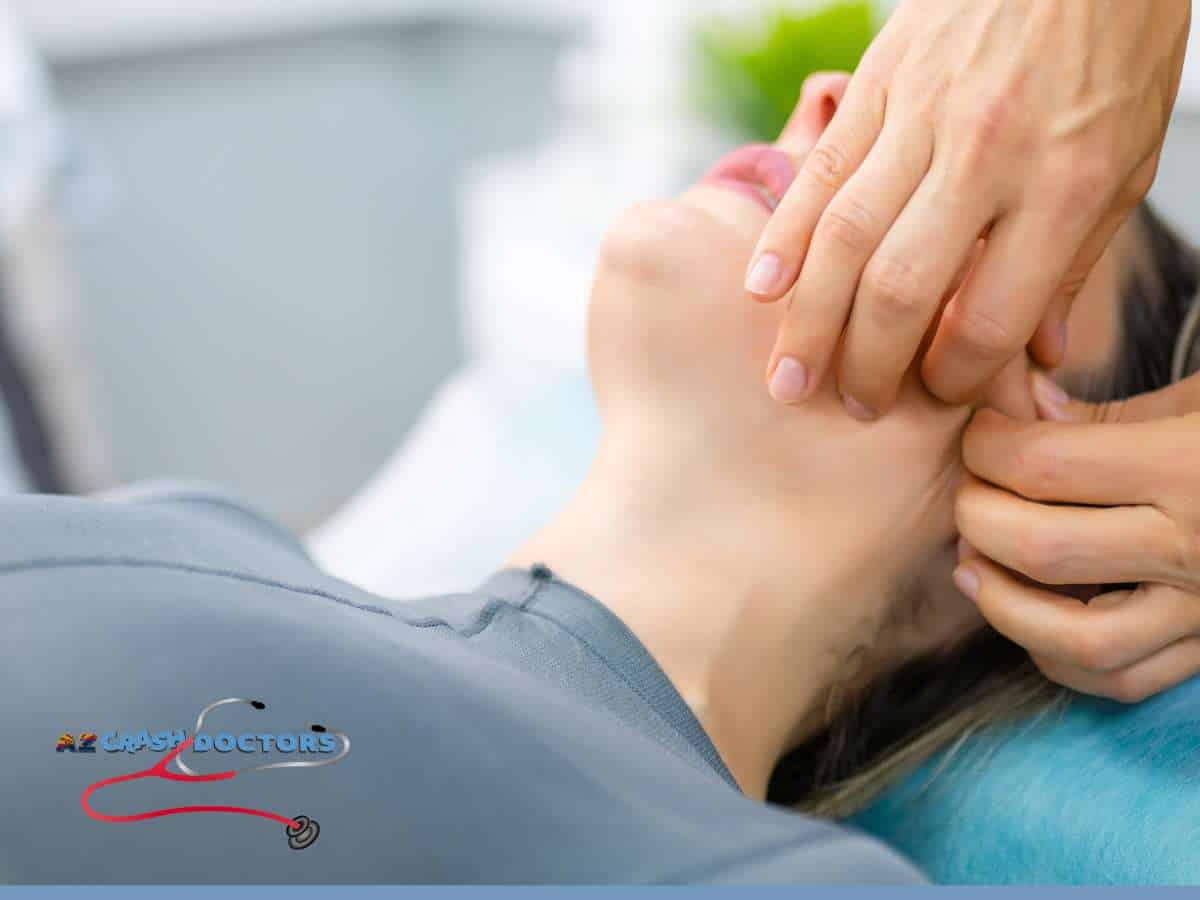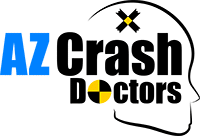Chiropractic Treatments To Restore Jaw Function & Relieve TMJ Pain
Most people expect soreness and pain in the neck, back or shoulders after a car accident, but many are surprised when they also experience pain in the jaw. This discomfort usually stems from TMJ (temporomandibular joint) issues, and can cause headaches, jaw stiffness, clicking sounds, and even difficulty chewing. Luckily, chiropractic care is a good approach to address TMJ pain in a natural and gentle way.
By focusing on alignment and reducing tension in the muscles and joints, auto accident chiropractors help restore proper jaw function and relieve discomfort without relying on medications or invasive treatments. But how do chiropractic treatments work? Why are they so effective at addressing TMJ pain? That’s what we’ll explain in this article.

What Is TMJ Pain & Why Does It Occur After An Accident?
TMJ refers to the Temporomandibular joint, which is a crucial part of the body that connects the jaw to the skull. It allows basic movements like speaking, yawning, and chewing. When it’s injured or strained, it can lead to different TMJ disorders that bring discomfort and painful symptoms like jaw clicking, headaches, stiffness, among others.
TMJ pain is quite usual after car accidents because the sudden impact can force the jaw out of its normal alignment. It can happen due to whiplash or even the pressure from the seatbelt. During the accident, the muscles and ligaments that stabilize the jaw may become overstretched or inflamed, leading to discomfort that can persist long after the initial crash.
In many cases, TMJ problems after an accident aren’t immediate. The symptoms may show up days or even weeks later due to tension build-up in the jaw, neck, and shoulders.
How Chiropractic Care Addresses TMJ Pain
Auto accident chiropractors use efficient techniques that focus on restoring alignment in the body, and that includes the jaw and surrounding muscles. Through gentle adjustments, they can realign the jaw and cervical spine, reduce tension in the muscles, and improve overall mobility.
Here’s how it works:
Whole–Spine–Jaw Connection
The jaw doesn’t work in isolation. Forward-head posture and restricted motion in the upper neck (occiput–C3) alter the pull of the suprahyoid/infrahyoid muscles, shifting the mandible backward and compressing the TMJ. Correcting cervical and upper-thoracic mechanics reduces this abnormal load.
Targeted Joint Work
For the TMJ itself, chiropractors use gentle mobilizations (distraction and anterior/inferior glides) to improve disc-condyle tracking, reduce joint compression, and calm irritated tissues. High-velocity thrusts to the jaw are generally avoided as they focus more on the cervical/thoracic segments influencing the joint.
Soft-Tissue Release
Overactive muscles (masseter, temporalis, medial/lateral pterygoids) and neck stabilizers (suboccipitals, SCM, upper trapezius) are treated with myofascial techniques, trigger-point release, and instrument-assisted work. This lowers resting tone, improves blood flow, and eases referral pain to the ear, temples, or teeth.
Neuromuscular Re-Education
Auto accident chiropractors also re-educate about taking care of your neuromuscular system. The explain specifics techniques, including controlled opening with the tongue on the palate, isometrics, and lateral deviation drills that retrain symmetrical jaw motion. Chiropractors also explain the breathing and diaphragm activation to reduce clenching by decreasing sympathetic drive.
Posture & Movement Retraining
Scapular and thoracic mobility work supports a neutral head position, lowering repetitive strain on the jaw while ergonomic tweaks (screen height, phone use) help maintain gains between visits.
Nervous System Modulation
By normalizing cervical input to the trigeminal system and down-regulating nociception, these adjustments can reduce central sensitization linked to headaches and facial pain.
Benefits Of Chiropractic Treatment For TMJ After An Auto Accident
Chiropractic care offers numerous benefits for people dealing with TMJ pain, especially after an auto accident. Instead of simply treating discomfort with painkillers, chiropractic care focuses on correcting the underlying misalignments and muscle tension that contribute to jaw pain.
Some of the main benefits include:
- Drug-free relief: Reduces reliance on medications and avoids the side effects of long-term drug use.
- Improved jaw function: Restores smoother opening and closing of the mouth, making chewing and speaking more comfortable.
- Reduced pain and inflammation: Gentle adjustments and soft tissue work with car accident chiropractors usually calm irritated joints and surrounding muscles.
- Relief from related symptoms: TMJ pain often triggers headaches, earaches, and neck or shoulder tension, but with chiropractic care all these are reduced.
- Support for long-term healing: Correcting alignment helps prevent chronic issues from developing later on.
Car accidents can disrupt the delicate balance between the spine, jaw, and surrounding muscles, which is why chiropractic treatment becomes so crucial as it provides a holistic way to restore comfort and function while promoting overall recovery.
Complementary Therapies Chiropractors May Recommend
Chiropractic care usually works better when combined with supportive therapies that target the muscles, posture, and habits affecting the jaw. These complementary approaches can speed up recovery and make the adjustments more effective:
- Soft tissue therapy or massage: Helps release tension in overworked muscles like the masseter, temporalis, and neck stabilizers that contribute to jaw pain.
- Jaw and neck exercises: Simple stretches and strengthening routines improve mobility, encourage proper alignment, and reduce stiffness.
- Posture correction strategies: Professional guidance on sitting, sleeping, and working positions are essential to minimize strain on the jaw and cervical spine.
- Stress management techniques: Since stress can lead to teeth grinding or jaw clenching, relaxation practices such as breathing exercises or mindfulness may be recommended.
- Lifestyle adjustments: Advice on avoiding hard or chewy foods during recovery and tips for breaking habits like nail-biting or chewing gum.
By combining these therapies with chiropractic adjustments, patients often experience faster relief and a lower risk of recurring TMJ issues.
When To Seek Chiropractic Care After An Auto Accident
You should never ignore any jaw pain after a car accident, especially if it appears with other symptoms like ear pain, clicking, headaches or difficulty opening the mouth. These are the most common signs of temporomandibular joint pain, and may worsen over time, so they require professional care.
If you’ve recently been in an accident and are experiencing jaw or neck pain, don’t wait for it to bring worse symptoms. The experienced team at AZ Crash Doctors can connect you with skilled chiropractors and medical professionals who specialize in post-accident care. Schedule a consultation today to take the first step toward lasting relief and recovery.

